Vanilla Extract vs Paste vs Powder vs Beans: Strength and Usage Guide
Vanilla stands as one of the most beloved flavors in American kitchens, yet many home bakers struggle with choosing the right vanilla form for their recipes.
Each type of vanilla brings unique characteristics, flavor intensities, and practical applications that can make or break your culinary creations.
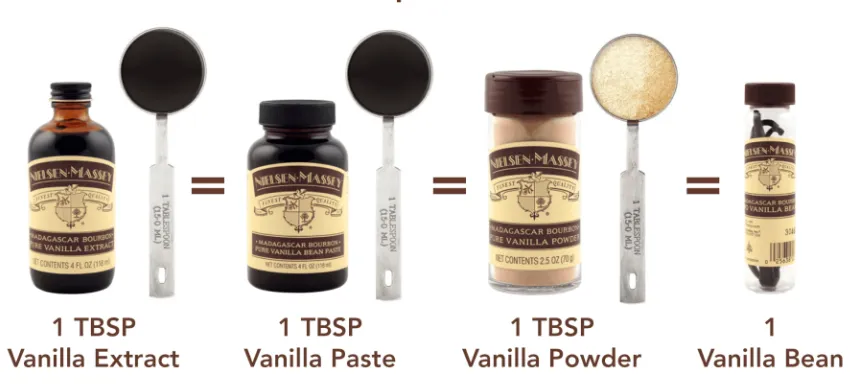
Understanding the differences between vanilla extract, paste, powder, and beans will transform your baking from good to exceptional.
This comprehensive guide breaks down the strength, usage, and best applications for each vanilla form, helping you make informed decisions for every recipe.

Vanilla Extract: The Kitchen Staple
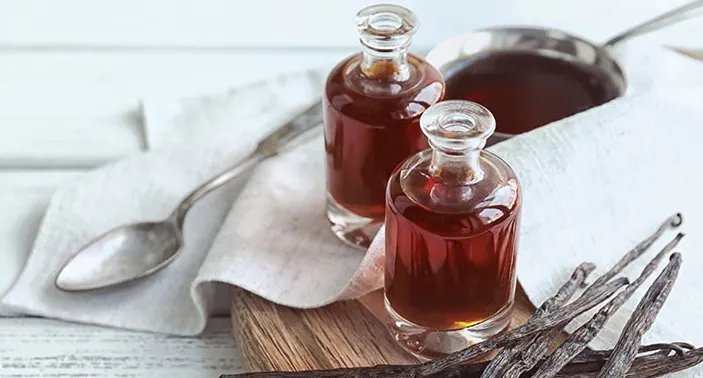
Pure vanilla extract remains the most common form of vanilla in American households. Producers create this liquid form by soaking vanilla beans in alcohol and water, extracting the complex flavor compounds over months of aging.
The alcohol content typically ranges from 35% to 40%, which helps preserve the vanilla and intensify its flavor profile. High-quality pure vanilla extract delivers a rich, complex taste with floral and woody notes that artificial versions cannot replicate.
Strength and Conversion Standard vanilla extract provides moderate flavor intensity. Most recipes call for one to two teaspoons per batch of cookies or cake. When substituting other vanilla forms for extract, use these conversions:
- 1 teaspoon vanilla extract equals 1/2 teaspoon vanilla paste
- 1 teaspoon vanilla extract equals 1/4 teaspoon vanilla powder
- 1 teaspoon vanilla extract equals 1/2 inch of vanilla bean pod
Best Uses for Vanilla Extract Vanilla extract works exceptionally well in liquid-based recipes where the alcohol content can evaporate during cooking. Cakes, cookies, custards, and ice creams benefit from extract’s ability to distribute evenly throughout the mixture.
The liquid form integrates seamlessly into batters and doughs without affecting texture. Extract performs particularly well in recipes with longer cooking times, allowing the alcohol to cook off while concentrating the vanilla flavor.
Avoid using vanilla extract in recipes where the alcohol might not cook off completely, such as no-bake desserts or frostings, unless you specifically want that slight alcohol note.
Vanilla Paste: The Visual and Flavor Champion
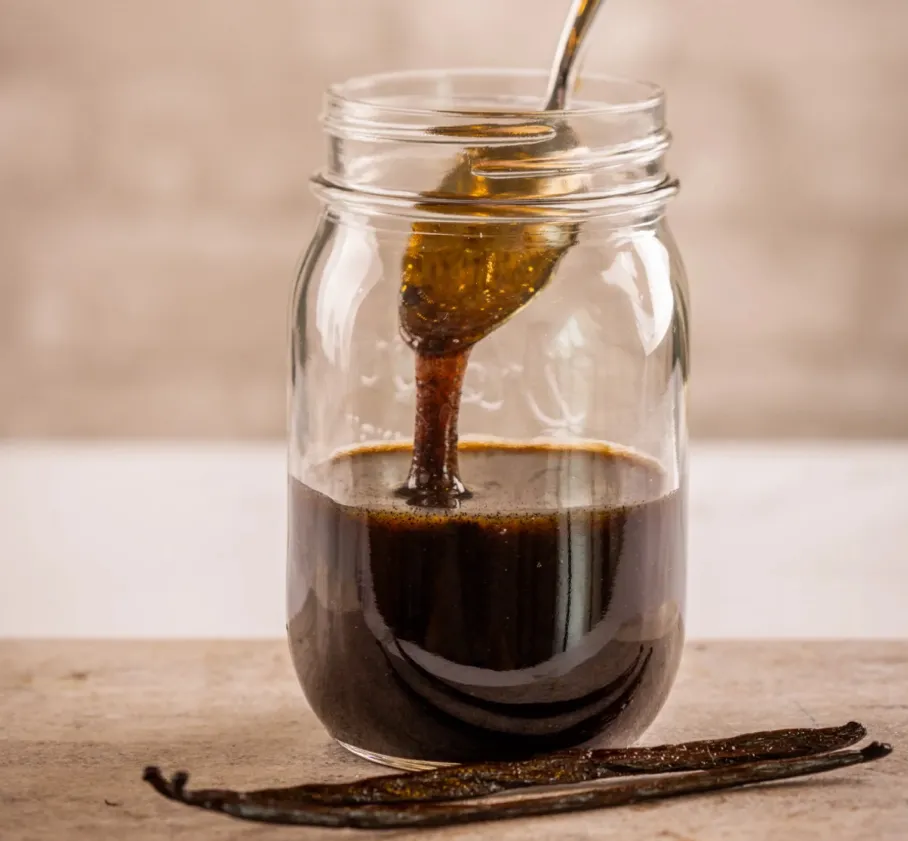
Vanilla paste combines the convenience of extract with the visual appeal of vanilla bean specks. Manufacturers blend vanilla extract with vanilla bean pods and a thickening agent, usually corn syrup or sugar, creating a thick, syrupy consistency.
This form delivers intense vanilla flavor while providing those coveted black specks that signal premium vanilla to consumers. The paste contains both the extracted vanilla compounds and the ground vanilla bean particles.
Strength and Conversion Vanilla paste packs approximately twice the flavor intensity of standard extract. The concentrated nature means you need less paste to achieve the same flavor impact. Use half the amount of paste compared to extract in most recipes.
The thick consistency allows the vanilla flavor to cling better to ingredients, resulting in more pronounced vanilla notes in the finished product. This concentration makes vanilla paste more economical despite its higher upfront cost.
Best Uses for Vanilla Paste Vanilla paste excels in applications where visual appeal matters as much as flavor. White cakes, vanilla bean ice cream, crème brûlée, and buttercream frosting showcase the distinctive speckled appearance that customers associate with premium vanilla.
The paste works particularly well in cold applications like whipped cream, mousse, or no-bake cheesecakes where the flavor needs to shine without heat activation. The syrupy consistency prevents the vanilla from separating or settling.
Professional bakers favor vanilla paste for items sold in display cases where the visible vanilla specks justify premium pricing. The paste also performs excellently in custards and puddings where the specks create an appealing visual texture.
Vanilla Powder: The Heat-Stable Solution
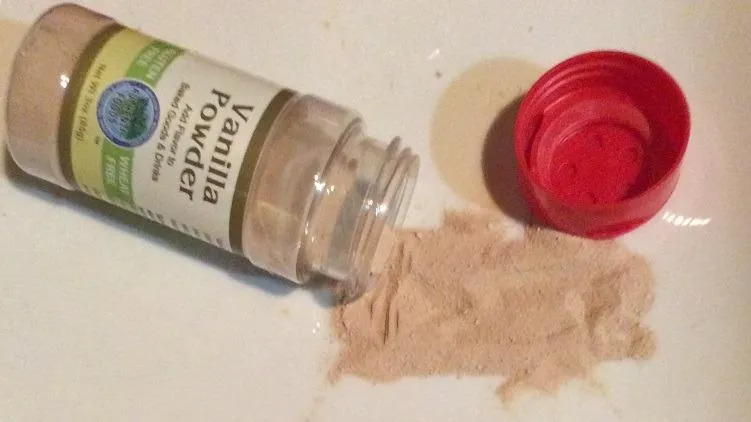
Vanilla powder consists of ground vanilla beans mixed with a neutral carrier like cornstarch, sugar, or maltodextrin. Some manufacturers also produce powder by spray-drying vanilla extract, removing the liquid while preserving the flavor compounds.
This dry form offers unique advantages in specific baking applications, particularly where moisture control is critical. The powder form prevents additional liquid from affecting recipe ratios while delivering concentrated vanilla flavor.
Strength and Conversion Pure vanilla powder provides intense flavor concentration, requiring only one-quarter the amount compared to extract. However, many commercial vanilla powders contain significant amounts of carrier ingredients, diluting the vanilla concentration.
Always check ingredient labels to determine vanilla content. High-quality vanilla powder should list vanilla as the primary ingredient. Cheaper versions may contain mostly cornstarch or sugar with minimal vanilla content.
Best Uses for Vanilla Powder Vanilla powder shines in recipes where additional moisture could cause problems. White chocolate applications, macarons, and delicate meringues benefit from powder’s moisture-free vanilla flavor.
The powder form remains stable at high temperatures, making it ideal for recipes requiring extended baking times or high-heat applications. Unlike extract, the powder will not evaporate or lose potency during long cooking processes.
Dry rubs for grilled fruits, spice blends, and homemade vanilla sugar showcase powder’s versatility beyond traditional baking. The powder distributes evenly in dry mixtures without creating clumps or moisture pockets.
Vanilla Beans: The Premium Experience
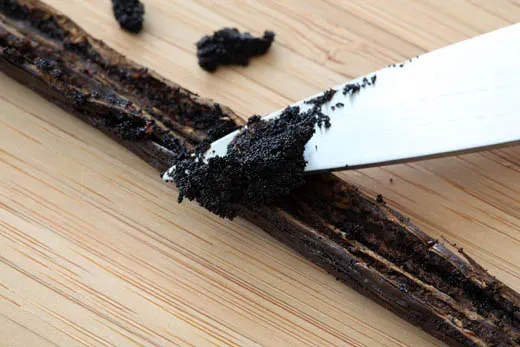
Whole vanilla beans represent the ultimate vanilla experience, offering the most complex flavor profile and maximum visual impact. Each bean contains thousands of tiny seeds suspended in a paste-like interior filled with concentrated vanilla compounds.
Quality vanilla beans should feel pliable and slightly oily to the touch, indicating proper moisture content and freshness. Dry, brittle beans have lost essential oils and will provide inferior flavor.
Strength and Conversion One vanilla bean typically equals two to three teaspoons of vanilla extract in flavor intensity. However, the complexity of flavor compounds in whole beans creates a more nuanced taste profile that extract cannot fully replicate.
The bean’s interior paste provides the most concentrated vanilla flavor, while the pod itself contributes additional aromatic compounds. Both parts contribute to the overall flavor experience when used properly.
Best Uses for Vanilla Beans Vanilla beans excel in applications where their premium nature justifies the cost and effort. Crème anglaise, vanilla bean panna cotta, and artisanal ice creams showcase the bean’s superior flavor complexity.
Infusing cream, milk, or sugar with whole beans extracts maximum flavor while creating an elegant presentation. The empty pods retain significant flavor and can be repurposed for vanilla sugar or additional infusions.
Restaurant desserts and special occasion baking benefit from beans’ visual impact and superior flavor. The visible specks and intense aroma signal quality and attention to detail that customers notice and appreciate.
Making the Right Choice for Your Kitchen
Budget considerations often determine vanilla selection for home bakers. Pure vanilla extract offers the best balance of quality, convenience, and cost for everyday baking needs. Keep high-quality extract as your primary vanilla source for most recipes.
Consider vanilla paste for special occasions or when visual presentation matters. The investment pays off in professional-looking results that justify premium ingredient costs.
Reserve vanilla powder for specific technical applications where moisture control is critical. Most home bakers can skip powder unless they frequently make temperature-sensitive confections.
Vanilla beans deserve a place in serious bakers’ pantries for special projects and when maximum flavor impact justifies the expense. Store beans properly in airtight containers away from light and heat.
Storage and Quality Considerations
Proper storage extends vanilla’s shelf life and preserves flavor quality. Pure vanilla extract improves with age when stored in a cool, dark place. The alcohol content prevents spoilage, making extract virtually indefinite when stored properly.
Vanilla paste requires refrigeration after opening and typically lasts 12 to 18 months. Check for separation or off odors that indicate quality degradation.
Store vanilla powder in airtight containers away from moisture and heat. Properly stored powder maintains quality for two to three years.
Keep vanilla beans in airtight containers in cool, dark locations. Properly stored beans remain usable for several years, though flavor intensity gradually diminishes over time.
Understanding these vanilla forms empowers you to choose the right type for each recipe, elevating your baking results while managing ingredient costs effectively. Each form serves specific purposes in the well-equipped kitchen, contributing to consistently excellent vanilla-flavored creations.
Thank you for this breakdown! I had no idea that vanilla paste needed to be refrigerated after opening!
Welcome